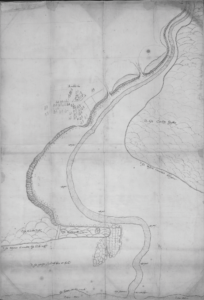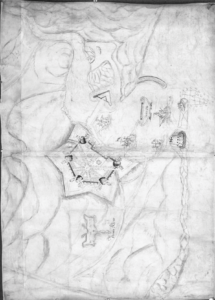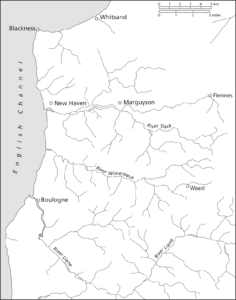David Parrish
Jacobitism and Anti-Jacobitism in the British Atlantic World, 1688-1727
Boydell & Brewer
199 pp. $99.00 US
Publication Date: 2017
Jacobitism and Anti-Jacobitism in the British Atlantic World, 1688-1727 was published in 2017 by David Parrish. Dr. Parrish is an Associate Professor of Humanities and Director of Academic Assessment at the College of the Ozarks. His teaching focus varies in topic, he has taught British History, American History, and World Regional Geography. Although, both of his publications are about the British Atlantic World so you can assume that his specialty is on the British Atlantic.
Let me start off by saying why I decided to pick this book. I saw it on our Zotero list of potential books and it caught my eye because I have read Outlander and watched the show and a plot point is the Jacobite rebellion and the Stewart King. I wanted to see the historical side of it, not the dramatized version I’ve read and watched. David Parrish breaks his book into two parts, with 3 different sections inside of each part. I feel the way that Dr. Parrish breaks his book up and is effective given the topics of each section, the way that he’s formatted his book suits the two parts, context and cases. When you’re reading, you’re able to pinpoint what his argument is and the flow of the book is easy to follow along with, something that some books this semester I had issues with.
Chapter 1 or Part 1, as mentioned previously, is broken up into 3 different parts that help to frame Parrish’s thesis statement. Part 1 covers the context of the book, what is this book about and how it fits into the historiography. Parrish starts Part 1.1 by telling the reader the outline of the chapter. “This chapter seeks to outline the significance of Jacobitism and the rage of party in the British Atlantic and suggests that both Jacobitism and antiJacobitism, part of the cultural totality of the British Atlantic and an integral facet of Whig and Tory divisions, acted as linking elements joining disparate political cultures in the British Atlantic world to a divided British body politic.” (14) Parrish backs up his claims with evidence that British leaders struggled to keep settlers in line and these settlers would go around British laws such as the Navigation Acts to get goods and services at a cheaper rate. The crown tried to regain control of the situation in the New World but problems back at home made it harder and in some states, royal appointees were removed in a series of revolts. Part 1.2 talks about how religion played a role in the British Atlantic World. Religion was a huge factor in Jacobitism “Roman Catholics, members of the Church of England and Scottish Episcopalians each in their own manner held to notions of loyalty which helped to perpetuate Stuart claims to the kingdoms of England, Scotland and Ireland, and the empire throughout the Atlantic.” (38) Parrish would continue to explain how religious decisions impacted the greater British Atlantic World forty years after the Glorious Revolution. “The threat of a Stuart restoration, especially in the years between 1689 and 1745, meant that theology became a politicised battleground as religious controversies contributed to a growing High Church attachment to Jacobitism. Throughout the early eighteenth century, debates about the jure divino nature of episcopacy brought Scottish Episcopalians into the confessional culture of the Church of England, but similar debates also encouraged Anglican schemes for a possible union with the Gallican Church in France.” (48) Jacobitism had transnational repercussions that showed that through religious discourse, some were sympathetic to the exile Stewarts and that this discourse created a divide within the Church that identified and signified the ideology of the Jacobites and the Anti-Jacobites. 1.3 discussed Jacobitism in the Atlantic public sphere. “Religious controversies, the operation of imperial politics and the appointments system provided a mechanism for public and private expressions of both Jacobitism and anti-Jacobitism. Moreover, these religious and governmental systems served as institutional networks of communication, connecting colonists to the religious controversies and party politics of mainland Britain.” (66) David Parrish in this part explained in detail how both Jacobitism and anti-Jacobitism was influenced by the public sphere and by the end of the chapter, you believe his argument. That the colonists directly engaged in the exchange of information regarding religious controversies and political discourse. Newspapers became a significant source of information for the colonists and Parrish states that despite this the public sphere did not create a homogenous political culture.
Part 2 is titled ‘Cases’ and this is where Parrish adds to the knowledge and sources that he’s already presented. Part 2.1, titled Occasional conformity in miniature: the rage of party, Jacobitism and anti-Jacobitism in South Carolina, c. 1702–1716 discusses how Jacobitism in South Carolina didn’t fit into the historiography despite there being a number of cases, he goes on to state that “evidence of a Jacobite political culture and accusations of Jacobitism against the governors and Anglican clergymen during periods of intense political conflict reflect elements of a contested, transatlantic language of party politics shared among Britons in the Atlantic world.” (98) Parrish would spend the chapter discussing why South Carolina was important and how the political discourse impacted the British Atlantic world, by the end of the chapter, he concludes that “Although party rivalries in South Carolina’s legislature cooled after the debates surrounding the passage of the establishment acts, religious disputes continued to inspire party affiliation. The establishment of the Church of England in the colony and the High Church Tory ascendancy in Britain from 1710 to 1714 nurtured the development of a High Church Tory interest in South Carolina, which in turn fostered elements of a Jacobite political culture, although just how prevalent Jacobite sympathies really were in South Carolina remains an unsolved problem.” (117). Part 2.2 ‘An echo to that on the other side’: Jacobitism and anti-Jacobitism in the mid-Atlantic colonies, c. 1710-1717 takes what you learned from South Carolina and moves it up to the Mid-Atlantic colonies. Jacobitism and anti-Jacobitism were a part of everyday political, religious and print discourse in the mid-Atlantic. By the end of the chapter, Parrish has listed a number of cases in which this political discourse surrounding the jacobite cause in the mid atlantic and how religion affected that discourse, Parrish writes that “The informal alliances of the High Church party in the mid-Atlantic colonies with High Church Tories in Britain fairly or unfairly associated them with a suspected Tory/Jacobite conspiracy, realised in the rising of 1715–16, which resulted in the political defeat of the High Church interests in the mid-Atlantic by the end of 1716.” (138). The final part 2.3 titled ‘Now the mask is taken off’: Jacobitism and anti-Jacobitism in colonial New England, 1702–1727 is a good finish to a surprisingly good book. Parrish in his second paragraph states the purpose of his chapter, something that he has been good at doing in his book, “This chapter argues that Jacobitism and anti-Jacobitism were fundamental elements in religious controversies and in the transatlantic political culture of colonial New England from 1702 to 1727.” (139) Parrish added to the information that he already presented, that this hot topic was woven into the discourse of the mid-atlantic, particularly through the High Church “The rise of a High Church Anglicanism in New England may not seem a credible Jacobite threat in the same manner as the rebellions of 1715 and 1745, but for Congregationalists the presence and espousal of crypto-Jacobite principles in New England associated with a High Church Tory party masked the first step towards disaffection to the Protestant succession.” (165).
In conclusion, Jacobitism and Anti-Jacobitism in the British Atlantic World, 1688-1727 by David Parrish offers a new insight into the Jacobite and Anti-Jacobite discussion. He views the subject not from the standpoint of the British Isles but instead on the British Atlantic World, primarily the New World. Parrish came to several conclusions but the most significant in my opinion was that “Although it is true that Jacobites were not actively plotting colonial rebellions or participating in transatlantic conspiracies to restore the exiled Stuarts, Jacobitism – and therefore anti-Jacobitism – was part and parcel of a transatlantic British culture because it was an enduring feature of British political and religious discourse throughout the first half of the eighteenth century.” (166) The prevalence in the colonies surrounding the Jacobite’s led to people being accused of being disloyal to the crown and caused animosity towards the British among the colonists.
Book Review By Vincent Cervone, Graduate Student at George Mason University.


